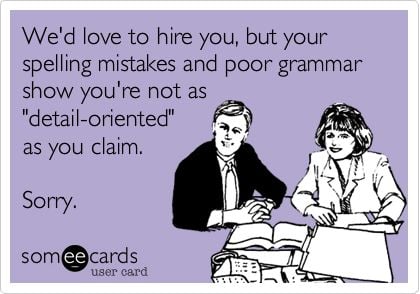We know resume objectives are out and making a unique resume is in...so let's start at the top. How do you make your resume and, hence, your experience catch a Hiring Manager's eye? It all starts with a killer summary.
Read on to learn how to write one for yourself.
Wait. Should I Delete My Objective?
/Hiring%20Project%20Based%20Creative%20Talent.jpg?width=720&name=Hiring%20Project%20Based%20Creative%20Talent.jpg)
Gather around millennials! Let us tell you the story of the resume objective. Years ago, a resume objective was a statement of your goals for employment, usually listed at the top of your resume and one or two sentences long. The best ones were tailored to the job you were applying for.
"Some people say that objectives are no longer necessary in a resume — at best, they are unnecessary, and at worst, they are outdated," says Alison Doyle to The Balance Careers. We agree: They're an outdated concept. The vast majority of personal objectives are seen as bland, generic, and a waste of space. They may not fall into the category of “bad” — but according to a study that asked more than 70 employers what they thought, resume objectives are now seen as a total waste of space.
We promise that the Recruiter already knows your objective is to get an awesome job that pays the big bucks. Your best bet is to remove the objective and use the space for actual career accomplishments. Leading with your superhero skills will help make the case for why you should be hired.
So What SHOULD Go at the Top of Your Resume?
You pressed delete and got rid of that objective paragraph. Now what? Here are some creative tips for using that space wisely:
- Create a Skills Summary
If there is something unique about your career (say you took time off to backpack through Europe or switched fields midway through life), this is the best place to explain it. Use two to three sentences only. - Lead with a Brief Testimonial
Pop a brief testimonial up front from a previous employer! The best place to find fodder for testimonial snippets are within letters of recommendation written on your behalf. Or use one from your LinkedIn profile. Grab a compelling sentence and put that in place of your objective to infuse your resume with a more unique and human feel. - Try a Handful of Bullets
Cover your key skills and professional characteristics. Or list your recent awards or upcoming speaking engagements. - Spotlight Your Education
Why not place your education front and center? If you graduated with top honors (especially if you graduated from a prestigious university), letting a Hiring Manager know right away could push your resume to the top of the pile. - Show Off Your Skills
Have a set of hot, in-demand skills like social media certifications, e-commerce experience, or proficiency in all of the Adobe CS products? If they're related and necessary to the job you're applying for, put them up top proudly.
Why Use a Resume Summary?
/LinkedIn%20Computer.jpg?width=720&name=LinkedIn%20Computer.jpg)
Know how you have a good summary at the top of your LinkedIn profile? Think of your resume summary the same way! The top of your resume is a great place to put forth skills that show your fit for the role.
Sometimes called a summary statement, a resume summary is a few short lines or bullet points that go at the top of your resume document and "make it easy for the hiring manager to understand your experience and qualifications. Basically, it explains what you bring to the table for that employer," according to The Muse.
Summary statements are usually best for more experienced professionals with years of experiences to tie together with a common theme (read: brand). Or, alternatively, they can be used to tie together disparate experiences with a set of key transferable skills. On the other hand, if you have a pretty linear or straightforward career path, the space is probably better used for additional bullet points in each role.
Other people that can benefit from a summary? Career changers!
"This could be just what you need to make your resume a little more cohesive," says The Muse. Hiring Managers often struggle with understanding how past skills relate to a new career, HR Professional Ellen Bird told Skillcrush. It’s important for you to help them understand your transition.
Where Does a Summary Go?
/Employee%20Onboarding.jpg?width=720&name=Employee%20Onboarding.jpg)
How do you cram this on your already crowded resume?
Here's a layout we love for highlighting a summary:

Unfortunately, we don't represent Leslie. 😂
(Click here for a PDF of it that you can steal for yourself.)
Want to see other one-page resume layouts we like?
Examples of Good Resume Summaries
/Dream_Job2.jpg?width=720&name=Dream_Job2.jpg)
Need help writing yours? Look online for some inspiration.
Here are samples of a few good summaries from The Muse:
- Expert communicator with 10+ years of experience dedicated to community development and advocacy within the field of education
- Strong public speaking, teaching, and facilitating skills for diverse student, professional, and general audiences
- Extensive involvement in all levels of relationship building, marketing, and program development
- Proven ability to manage multiple projects while meeting challenging deadlines
Basically, these statements should be pithy, strong, quickly get to the point of your qualifications, and give the person viewing your resume a sense of the value you offer.
Here are a few more examples Indeed.com likes:
- Efficient, thoughtful writer with dozens of bylined works published in major print and online periodicals
- Well-spoken property manager with 3 years’ supervisory experience and Certified Property Manager credentials
- Organized dental office associate with 7 years’ experience maintaining effective client schedules, billing policies, and office workflows
Sample Summaries from Our Very Own Artisan Talent Creatives
Here are some direct-from-the-real-world samples of resume summaries that grabbed our attention — in a good way!
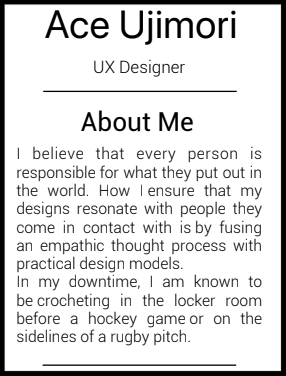
Long Summaries That Aren't Keyword Dumps:

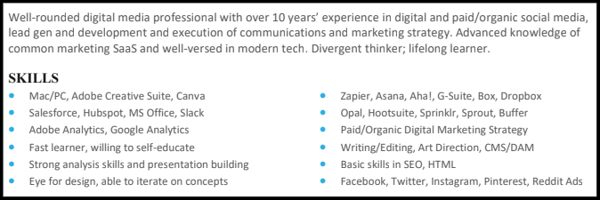
Learning Experience Design Consultant, Meg Verre:
Short Summaries About Experience:
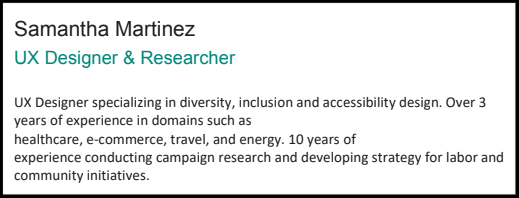


Patricia Brehm, Writer:
Short and Sweet with Points for Creativity:
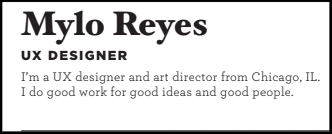

Now go forth and create a killer summary!
Need someone to show that new resume summary to? Register with Artisan and we'll take a look or check out our open jobs and apply to one.


